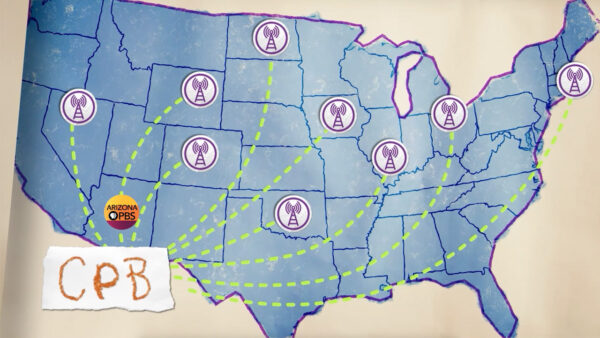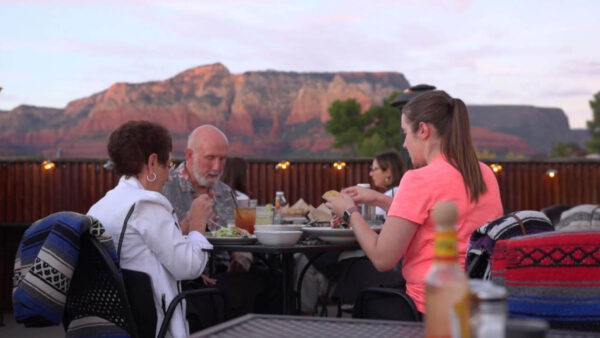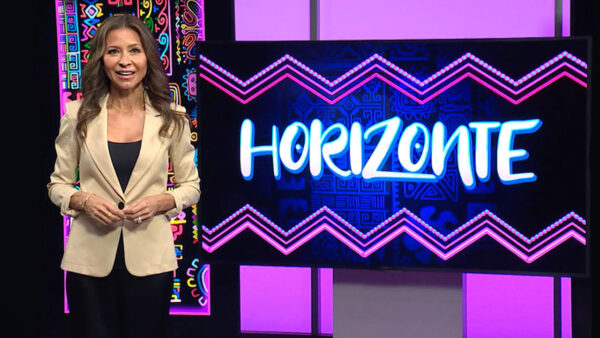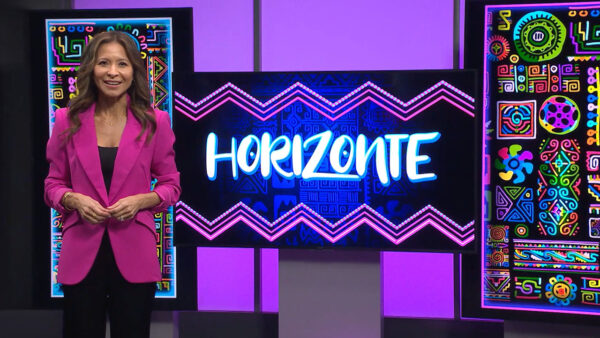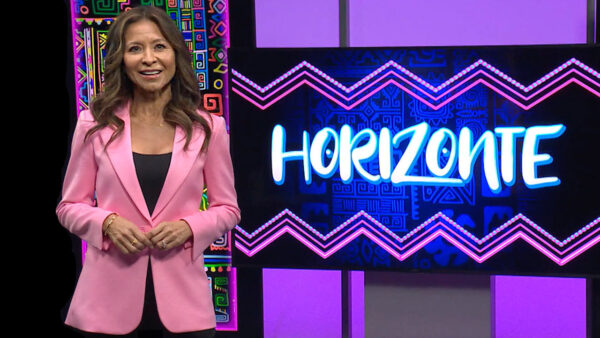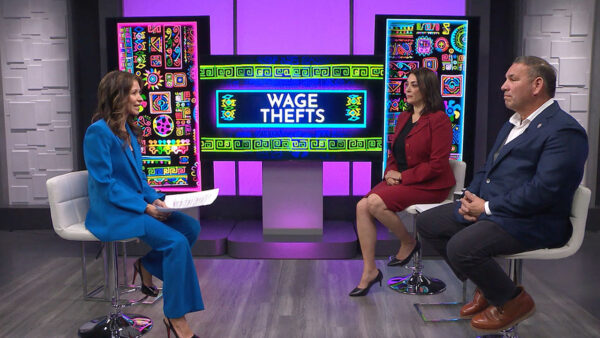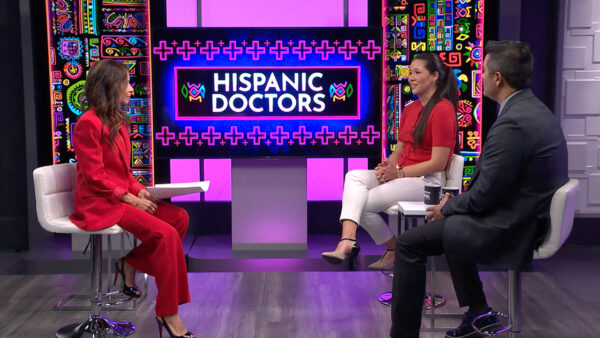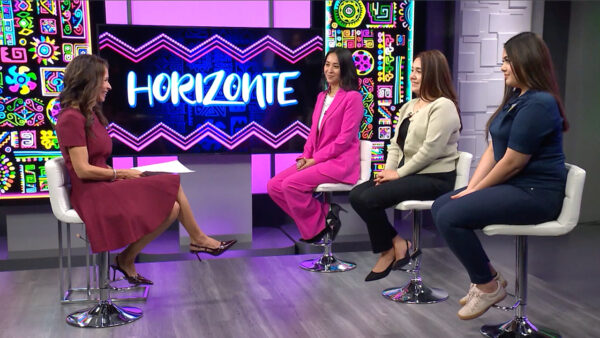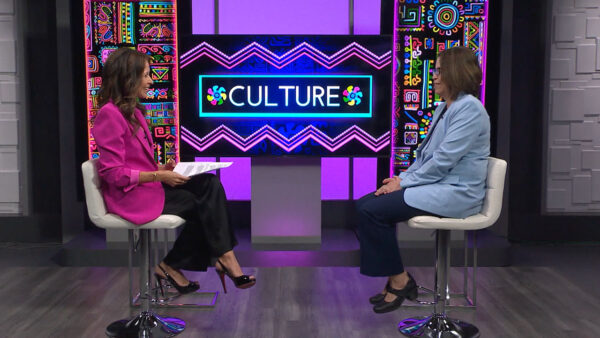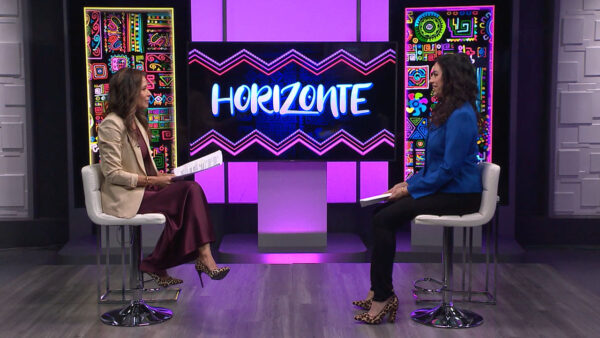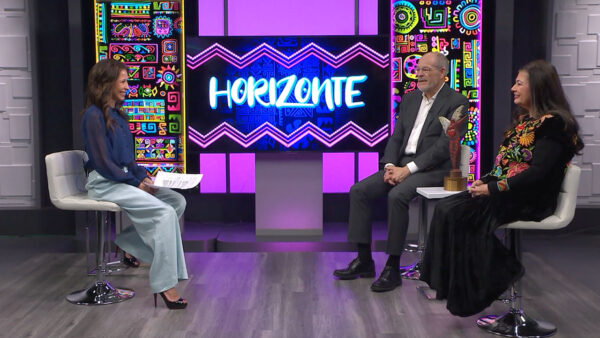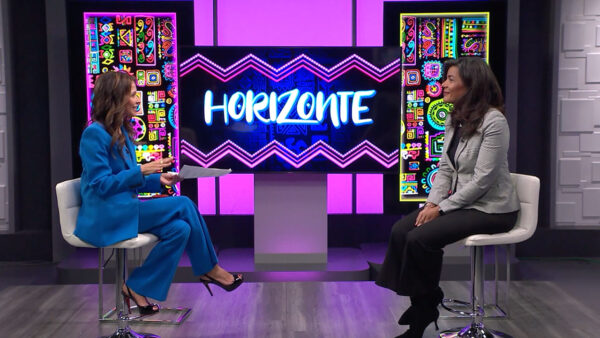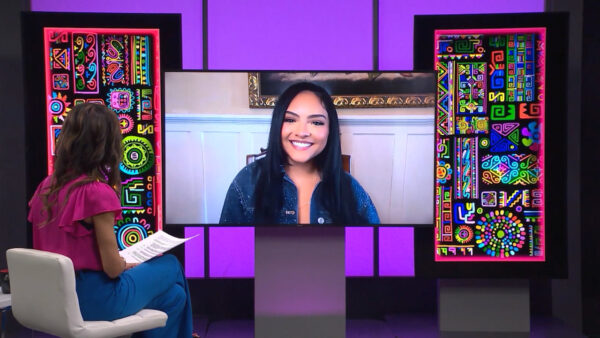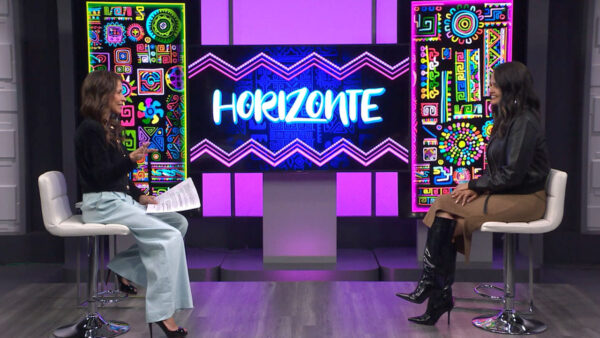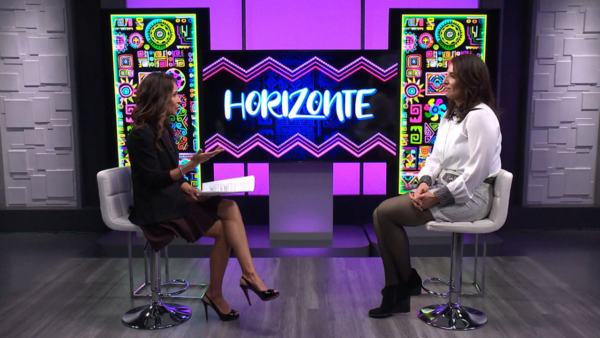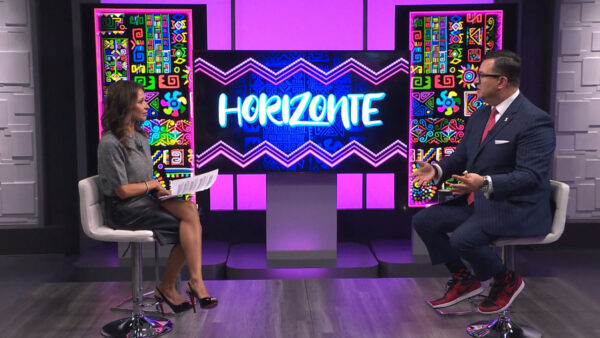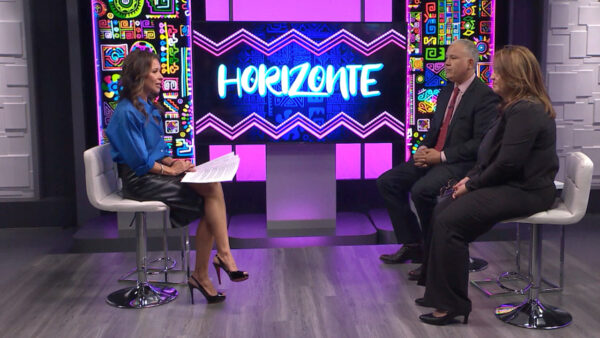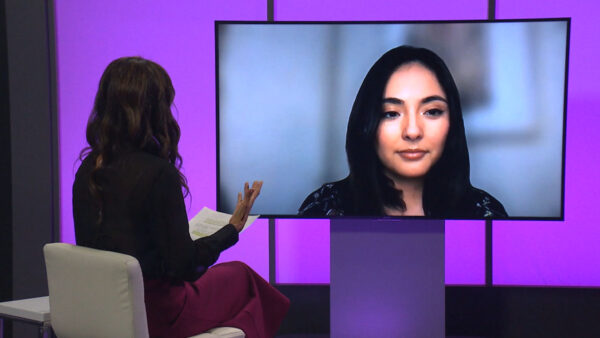The Governor’s Office of Highway Safety created a new program called La Protectora, an outreach initiative focused on educating the Hispanic community about traffic safety. Join Officer Cecilia Lerma on HORIZONTE as she discusses details of this project.
Learn more. Visit the La Protectora Web site.
Jose Cardenas:
Good evening. I'm Jose Cardenas. Tonight on "Horizonte," learn about an outreach program aimed at addressing the traffic safety needs of Arizona's Latino community. Plus, how will Arizona's employer sanctions law affect specific businesses? A look at the potential economic impacts in the state. And in "Horizonte" SOC, Sounds of Cultura, meet artist Larry Yanez, and where you can go this weekend to meet him and other Hispanic artists. All this coming up on "Horizonte."
Announcer:
funding for "Horizonte" is provided for SRP.
Jose Cardenas:
According to the national highway transportation administration, motor vehicle crashes are the leading cause of death for Latinos ages one to 34, and the 6th leading cause of death for all ages, surpassed only by heart disease and cancer. The Arizona governor's office of highway safety's mission is to bring awareness to safety issues in the state. One program the department has implemented is an outreach program specifically for the Latino community called La Protectora. Joining me to talk about the program is the coordinator, D.P.S. officer Cecelia Lerma. How did you get involved with La Protectora?
Cecilia Lerma:
well, the governor's office of highway safety was looking for an officer of Hispanic descent that could lead the program and coordinate it state wide. They put out the information to our police agencies and I ended up being selected for the job.
Jose Cardenas:
And La Protectora means the Protector. Why the need for this program? Is there any difference in terms of how these issues affect Latinos?
Cecilia Lerma:
there is a disproportionate rate of serious injuries and fatalities with the Hispanic community, and being that we are the sixth largest state nationally with a Hispanic population, there was a need to look at the statistics here in Arizona and as it turned out, we have some high incidences of fatalities and serious injuries within our own state. Based on that information, there was a need to implement the program and that is why the governor's office of highway safety went ahead and had the program developed.
Jose Cardenas:
it was patterned after one in California?
Cecilia Lerma:
that's correct. It was actually developed in California in 1987. They were also looking at a disproportionate rate of serious injuries and fatalities within their Hispanic community, and so they developed a program that they believed would be based on traffic safety information, based on an outreach level, and as a result, they actually saw their numbers drop. So it was a proven program, and now Arizona has it and Texas does, too.
Jose Cardenas:
before we start talking about what it is the program does and how you do it, what would account for the disparities between the mortality rates for Latinos versus non-Latinos? What kinds of things are happening, is it seat belt use, lack thereof?
Cecilia Lerma:
there are three major components contributing to the fatalities and serious injuries. One is low seat belt usage, child occupant protection usage --
Jose Cardenas:
people aren't using child seats and so forth?
Cecilia Lerma:
right. Thirdly, a high incident of these fatalities and serious injuries that have alcohol on board.
Jose Cardenas:
how does the program deal with those specific causes of these higher incidents of fatalities and injuries?
Cecilia Lerma:
one of the things we are doing is we are going out into the community and we are doing traffic safety education at what we call a grass-roots level, and we talk about primarily what you can do to avoid these incidences with our Latino community that will promote safer traffic habits. For example, we talk about what constitutes binge drinking. It has said five or more drinks on one occasion is binge drinking. We talk about that so people can get a gauge as to how much they're drinking when they go out and go to a festival or whatever. Things that they might not be aware of. When we go out into the community and ask a person, how do you know when you have been, you know, what tells you that you're intoxicated? And the common answer is that it is when, you know, they can't get up, or they can't walk anymore. And we know that by that time, you know, they've got quite a bit of alcohol on board. We feel if we can go out there and give them some instruments to use to help them educate themselves on the usages, you know, the consuming alcohol, that based on that, they can make better decisions so that they can, you know, if they are somebody that, you know, consumes more than five drinks at a party, they know that I now know that this is binge drinking. I need to make some plans to not drive or something that's going to, you know, prevent me from hurting myself, hurting my family, or hurting anybody else.
Jose Cardenas:
particularly as we get into the holiday season, you will see a lot of promotions on the enforcement side so that we will hear that there are road blocks and dui enforcement checkpoints. This program focuses more on not on enforcement, but more on education. Why is that? Why not spend money on more officers on the street?
Cecilia Lerma:
because education is prevention and we believe that if we go out and educate the community on the issues causing these tragedies in their lives. Because nowadays we all know people that are either directly related to us or in our communities that have gotten a dui. We know somebody that has died as a result of not wearing a seat belt. We know somebody who has been seriously injured that's in a wheelchair or paralyzed because of an automobile accident where, you know, the children weren't seat belted in or whatever. It is very much a part of our lives now. And it is -- it can be 100% prevented. Statistics show that Hispanic children are, between the ages of 5 and 12, are 72% more likely to die in automobile crashes because of the lack of seat belt usage. It is a tragedy.
Jose Cardenas:
what kind of reception do you get when you go out into the community and share this information?
Cecilia Lerma:
a lot of the families, a lot of parents will assure me that they do use child safety seats for their children, but they don't use them themselves. So, I get a chance to talk to them about what happens when they become a projectile in the vehicle and can easily, you know, suffocate the child, fall on top of the child, or, you know, cause serious injury to their child because they're not seat belted in themselves.
Jose Cardenas:
you have firsthand experience with these kinds of things because you were a highway patrol officer.
Cecilia Lerma:
Right. Correct. It's interesting that I saw a lot of fatalities and serious injuries within the Latino community that were a direct result of either alcohol being on board or they were ejected out of the vehicle because they weren't wearing their seat belts or their children died because they weren't in child safety seats. I remember all of those incidents, and I completely believe that it -- this is preventable.
Jose Cardenas:
and you have several specific programs. Let's talk about one of them. Pasa las Llaves. Pass the keys.
Cecilia Lerma:
that is a campaign that promotes passing the keys to someone who is completely sober. One of the things that people talk about with me is that, well, I was the designated driver because I had the least amounts of alcohol. That's not a designated driver. A designated driver has zero percent alcohol on board. I start to talk to them about that's not good enough. It has to be somebody that is completely sober. It is a misconception to give the keys to somebody that didn't drink as much as the other person.
Jose Cardenas:
how are you promoting the program within the community? Do you have brochures, or community, public service announcements?
Cecilia Lerma:
all of the above, yes. Plus we go out into the community itself and we infuse into the community and we talk to people, we pass out brochures, we give them bears that say buckle up, key chains that say pass the keys, anything to remind them the pain and the tragedy that someone goes through whenever they have to deal with losing a loved one can be prevented. We don't have to go through that.
Jose Cardenas:
if somebody wants more information about the program, how would they get it?
Cecilia Lerma:
there's several ways. We have a web site, its www.azgohs.gov. On that web site is a web page for my particular program, plus the many other programs that we have within our agency. And there is also on that web page is the telephone numbers for our offices, and anybody that wants more information or would like for us to visit their next function or event can get a hold of us and we will come out and we will do what we can for them.
Jose Cardenas: very good. Thank you for joining us. Ceclia Lerma.
Jose Cardenas:
everyone knows by now Arizona's new employer sanctions law will go in effect at the first of the year. Tonight a look at the potential impact of the law. Producer Merry Lucero, talks to one business that says due to the law their employees will be affected.
Merry Lucero:
[lawnmowers] in the valley we love our manicured landscaping. The landscape industry relies heavily on dependable, affordable labor. Xeriscapes Unlimited has been landscaping in the valley for 24 years. They have about 60 employees on the payroll. Xeriscapes checks the documentation of it's workers, still the owner Rod Pappas is carefully examining the new regulations.
Rod Pappas:
once I saw the law in writing, i questioned how are they going to enforce it. Putting you out of business for ten days or putting you out of business for good. I could see that could probably happen. Especially those of us with a state license. What I didn't realize the impact it was going to have on some of my employees, and some of my fellow workers.
Merry Lucero:
Pappas says the new employer sanctions law has many of his employees intimidated.
Rod Pappas:
they have become frightened over the law. A lot are making preparations to go back to mexico for good. Some of them are selling their cars, homes, packing up their families and making arrangements to go back.
Merry Lucero:
some of his employees have a long tenure here in the united states. Like Eduardo, who asked us not to show his face. He has been here for 15 years and worked for Xeriscapes for eight. He is now a supervisor.
Eduardo:
I come for a better life, family, got a nice work, so I just, I would like to stay. I want to stay.
Merry Lucero:
Eduardo has a wife and three children and a home here in the valley. He says the new law has him and others afraid.
Eduardo:
it is hard to decide what you are going to do, what we want to do, because basically we got our life here, all of our roots are here, and we don't know if we are going to sell, we -- we don't know what is going to happen to my family, my house, to everything.
Merry Lucero:
at this time, Eduardo is not going back to Mexico.
Eduardo:
I am going to stay. I am not planning on leave, you know, but everybody afraid. We don't know what's going to happen, but according to the laws, so it is going -- I think it is going to be fine. It is not going to affect the people who are working right now. I think it is going to be hard for people who are going to look for work.
Merry Lucero:
Eduardo is correct. The law focuses on knew hires and more so on the employer.
Rod Pappas: the law does not apply to employees as much as the employer. I'm the one they're targeting right now. The employers of those that knowingly and intentionally hire illegals are the ones that are basically on the chopping board right now.
Merry Lucero:
pappas says the biggest problem is replacing workers who leave because of the law with people who have the same experience and work ethic.
Rod Pappas:
the first thing we run into is a problem getting them to show up to work. A lot of times we will joke about it and offer an incentive, if you make it to work on time for the first week, we will give you another $50 signing bonus. Running jokes that we have around the office, you know, is jack smith going to show up for work tomorrow? What do you think? Yes or no?
Merry Lucero:
And Pappas will have to pay higher wages to new workers, drivers, supervisors.
Rod Pappas:
whether I hire someone that appears to be legal and someone that appears to be not legal are two separate issues. I will probably have the same documentation and the same i-9 form for each one. If you want to use a gut feeling, those that come in that I am 99% sure that they are qualified to work here are going to cost more money, and they know it. So, to answer your question, it will have an impact on my business. It will change probably my bottom line as much as 30 to 35%, so we will pass that on to the consumer.
Merry Lucero:
so, affordable landscaping may soon be a thing of the past. We may see more people doing their own yard work.
Jose Cardenas:
this weekend, the heard museum celebrates Hispanic culture with the valley's only Spanish market featuring more than 70 artists. One of the people that will be at the market is Larry Yanez. His artwork puts Hispanic tradition and popular culture Larry is here to talk about his work. You have been around the art scene for a long time. Let's talk about your background. I know that, but our viewers don't.
Larry Yanez:
I'm originally from Yuma. My mother and father were born in Yuma. I have a sister. I have to add that because last time she got angry for not including her in my comments.
Jose Cardenas:
that didn't happen on this show.
Larry Yanez:
no, that was someplace else. I have to include my whole family because all of my artwork is based on stories about the family.
Jose Cardenas:
what got you started in the visual arts?
Larry Yanez:
I was always doodling as a child. My mother taught me how to draw. My father taught me how to color. My sister and I would spend days and times watching TV going oh, I can draw this character, sharing information. My cousins, uncles, everybody contributed to that and encouraged me to do it. We had no idea that you could actually do it for a living. Oh, that's something that the rich people do when they get their college degree on go on. College is not one of those things that they had thought about. And I was able to, you know, leave Yuma by way of the military, get that G.I. bill, go to school, get a degree, in of all things art. I have gone through the whole gamut of things when it comes to educational things.
Jose Cardenas:
you indicated the inspiration for some of your work was growing up in Yuma with your family and the scenes. Explain that.
Larry Yanez:
oh, gosh, where can we start? Coming from a family of bilingual punsters…
Jose Cardenas:
that is reflected in some of your work.
Larry Yanez:
border issues that happen in Yuma. It has always been happening; it is nothing new all of this stuff in the news. The difference between Mexican Americans and Mexicans, and that whole society of cross-cultural living, to me it was becoming aware that my mother -- talk to me in Spanish and I would answer in English, without thinking twice about changing languages in my brain -- old folks, I had a fan watching me speak to this guy for a half hour, and he said I only got half of the conversation. He was talking in Spanish, you were answering in English. You went on for hours. What's going on? I went I just never think about it. It is one of the things we do without thinking.
Jose Cardenas:
where have you been exhibited? Some of your major exhibitions? I know you're everywhere. [laughter]
Phoenix Art Museum, Heard Museum, museum for youth, mesa museum for youths, Tempe art center in the old days. Smithsonian Washington, D.C. Los Angeles, Scotland, I have had stuff touring through Europe. A lot of the artwork i have are in people's collections and they tour to different places.
Jose Cardenas:
this is not a comment on your age. You have been around for a long time. What are you doing now? What is your principle focus?
Larry Yanez:
the Tempe center for the art, I call myself the official picture hanger for the city of Tempe. I do the installation. That is one of my great loves, working with other people's artwork.
Jose Cardenas:
anything exciting that you are working on right now?
Larry Yanez:
the next show. It is always the best one. It is exciting to take one down, put one up. Move along. I get to work and meet artists. I see new media. It's like this great educational component that just lends itself to my artwork. I have the greatest teachers in the world constantly.
Jose Cardenas:
I know from my own personal experience one of your most famous pieces is Cocina Hightecha, has recently been selected, as I understand it for inclusion in the Smithsonian calendar.
Larry Yanez: for the year 2007.
Jose Cardenas: let's talk about the piece and then let's talk about the selection.
Larry Yanez: the piece was more or less a tribute to my grandmother.
Jose Cardenas:
the kitchen.
Larry Yanez:
the kitchen -- a play on the word coming from the Native American tribes of Mexico, the old meca, those that played with computers and high tech things, were high techas, that is a play on the word. It is basically a refrigerator that was purchased in the 50s and still works to this day. And how high tech can you get? If you look at it there is a tube radio on top, and of course my children don't know what tubes are because they're used to all of this newfangled stuff. But it was under the table is where I would be playing with cars, or trucks, drawing, listening to the family stories. That adds a lot, too. When you come to someone's kitchen, it is always, did you eat yet? Do you want to eat something? Try this out. It was like this with our families. Another tia's house, another aunt's house, always about food. The whole family was about food. To me, that's Christmas. You walk into the house, you can smell the food, and the holidays, and my favorite joke at thanksgiving, turkey tacos, all right, I look forward to that.
Jose Cardenas:
how was the piece selected for inclusion in the Smithsonian calendar.
Larry Yanez:
It was put together with the White Art Museum for Los Angeles. One of the first major Chicano exhibits. How many years ago, I don't remember. It seems like the other day. A bunch of people went to Los Angeles for this huge opening --
Jose Cardenas:
Arizona artists.
Larry Yanez:
yes, and we were part of -- coming together with Chicano artists all over the country. It was like a family reunion. We had known and admired all of these other artists. We got to meet our heroes, some from the 60s in the Chicano movement way back then. It was quite an experience at that point. The white art museum had commission self-help graphics, another nonprofit organization --
Jose Cardenas:
the latter two being local --
Larry Yanez:
exactly, to promote, to have -- certain artists were chosen to come in and do a print. We all submitted work and mine was chosen. I went and got to work with their printmaker, and we did a limited edition of about 100. Each museum this exhibit traveled to get one of those prints from each one of these artists.
Jose Cardenas:
and the Smithsonian decided to pick it --
Larry Yanez:
they had the exhibit there. We were invited to come and perform for the opening of the exhibit. The whole thing came together. The exhibit at the Smithsonian in Washington, D.C.
Jose Cardenas:
once of the things we had been talking about, Chicano artists, what is your view of Chicano Spanish artists today?
Larry Yanez:
we're getting better and better. We're telling our stories, and our messages are getting out to more and more people. People missed it in the 60s and they're now catching up with us, and it is that way with the arts. A lot of my stuff, like that print was done way back in 1989. It is being recognized now. You know, it takes a while.
Jose Cardenas:
things are good. Thank you for joining us.
Larry Yanez:
thank you for having me.
Jose Cardenas:
it is good to have you here.
the Spanish market is this weekend, November 10th, 11th at the heard museum in phoenix from 10:00 to 5:00 p.m. on both days. Admission is free.
that's our show for tonight. Next Thursday on "Horizonte," meet Daniel Martin Diaz, his latest collection of art, Mysterium Fidei, mystery of faith, is on display in mesa. That is our show for this Thursday night. Thank you for joining us. Have a good evening.
Announcer:
if you have questions or comments about "Horizonte," please write to the addresses on the screen. Your comments may be used on a future edition of "Horizonte."
Funding for "Horizonte" is provided by SRP.
Cecelia Lerma: Program Coordinator, La Protectora;


